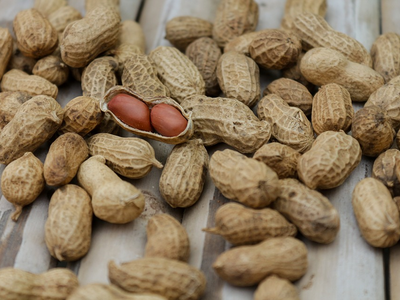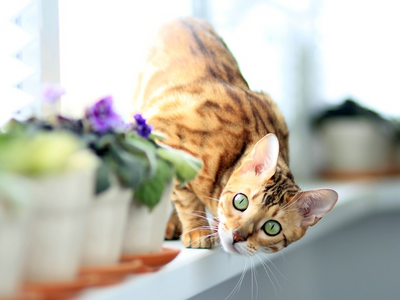04.02.2022
Can cats eat apples, or are they the forbidden fruit?
“An apple a day keeps the doctor away,” but can they save cats from vets? Can cats eat apples, or is the fruit unfit for feline consumption? Let’s find out!
Your cat is an obligate carnivore, so their natural diet consists of animal protein and fat, bioavailable vitamins and minerals, and lots of moisture. Given cats’ biological needs, an entirely vegan or vegetarian diet isn’t nourishing enough, but that doesn’t mean they can’t have a bite of the delicious apple from time to time.
Apples and other feline-friendly fruits are a viable source of fibre and can benefit your pet’s digestive tract when given sparingly. The real question is how often cats can eat apples, and what’s the best way to serve them. Untamed explores the nutritional value of this fruit, points out the bad apples (pun intended) of the feline diet, and offers tips on the best tailor-made meals for cats!
Is it okay to give apples to my cat?
Besides making them a threat to mice and cockroaches, your cat’s carnivorous nature requires them to consume the following nutrients:
- Animal protein
- Animal fat
- Moisture
- Vitamins and minerals
While apples may not have animal protein or fat, they still contain micronutrients that can benefit your cat. The flesh has high calcium, vitamin K, and vitamin C levels, while the skin is rich in antioxidants.
Apples also have the appropriate amount of fibre (2.4 grams on average) to help with particular gastrointestinal issues. For example, if your cat suffers from constipation, a bite of the Pink Lady can stimulate bowel movement.
If your cat expressed interest in the fruit, it’s okay to let them try it, as long as you:
- Consult your vet (if your cat suffers from a specific condition, e.g., diabetes, all fruit is off-limits)
- Wash the apple with water
- Get rid of the seeds, stem, and leaves
- Slice it into tiny, bite-sized pieces (not bigger than kitty biscuits)
- Watch out for any allergic reactions or gastrointestinal problems
Ultimately, the answer to “can cats eat apples” is yes—but in moderation. The fruit contains ten grams of sugar on average, equivalent to two full teaspoons. Cats aren’t biologically predisposed to digest carbs and don’t need them in their diet as protein is their main energy source.
If the taste test was a success and your cat has taken to apples, you can let them have a snack once every few weeks. As a rule, fruits, veggies, and grains (e.g., rice, corn, barley, etc.) shouldn’t take up more than 3% of your pet’s meal plan.

Stems, seeds, and leaves are off-limits, but the flesh and skin can make for a high-fibre treat!
Source: Louis Hansel
Does that mean my kitten can also try apples?
In their mother’s absence, kittens should be given a milk replacer formula (KMR) to sustain their development. At around week three, when the kittens open their eyes and get their first set of teeth, it’s time to start giving them solid food. But what does a well-balanced kitten diet look like, and do apples fit in the menu?
Kittens have different nutritional and energetic requirements from adult or senior cats. Since their bodies are developing, they need nourishing meals based on the following parameters:
|
Nutrient |
Recommended amount |
|
Protein |
Over 50% |
|
Fat |
Up to 20% |
|
Calcium |
Less than 3% |
Manufacturers of high-quality kitten food design their recipes according to the nutrient ratio presented in the table. You shouldn’t give them adult cat food before they’re fully grown since the contents might be inadequate. It can also be too hard on their stomach. The recommended meal plan is a mixed diet of baby food and milk supplements (KMR).
As for treats, they can come in handy for litter training. You should amp up your kitty’s protein intake to sustain their muscle and bone development. Try giving them tiny bits of cooked:
- Chicken
- Turkey
- Liver
- Scallops
- Mussels
- Clams
- Carp
- Tilapia
- Salmon
- Cod
- Tuna
Hold on, what about apples? While the fruit is safe for kittens, far healthier snacking options are available. The calcium content is a plus, but your kitty already gets all the necessary nutrients from the specially formulated baby food and KMR.
You can let them try apples or other fruits but don’t go overboard with snacks! Too many treats could mess with their weight, especially if they’re a breed prone to obesity, such as a Persian or a British Shorthair.
What should be the main course in the feline diet?
The two most widespread types of commercial cat food are:
- Dry cat food
- Wet or semi-moist cat food
Dry food
Kibble is the more affordable option, which is why it’s so popular among cat parents. It’s also said to help with malnutrition recovery and dental disease.
Dry food is made by mixing meat, veggies, and cereals into a dough-like mass, which is then exposed to extreme heat. The product is usually rough in texture, high in calories, and low in moisture.
While your cat could benefit from eating biscuits, especially if they’re older and don’t have much of an appetite, an all-dry-food diet could result in several health problems. Depending on their weight, sterilisation status, and overall health condition, you should eliminate biscuits or put your cat on a mixed diet of wet and dry food.
Wet food
Wet food is much closer to what your cat would eat in the wild. Your pet may be a spoiled indoor cat, but their biological needs are the same as those of wild felines. Your furry friend requires moisture, protein, and natural vitamins and minerals to thrive. High-quality wet food should be the foundation for your cat’s nutrition because it contains the essential macro and micronutrients.
If your feline friend isn’t thrilled with wet food, you can try:
- Adding a handful of kibble as a topping
- Spicing their meals with warm broth or soup to enhance the taste
- Changing the texture or flavour
- Switching to a different brand
- Heating the food and serving it in a clean bowl
Untamed food every day can keep the vet away!

How do you like them apples?
Image (c) Untamed
Untamed helps your kitty live a long and fulfilling life. Our nourishing recipes will keep your cat healthy and happy for as long as felinely possible.
We’ve worked hard to come up with the ultimate feline diet so that every Untamed meal is:
- Full of protein—The protein content in a single serving of Untamed food is twice the industry standard. We don’t use plant protein, meat derivatives, or other useless or harmful substances—only the best animal protein full of taurine for our feline delicacies
- Made with whole meat—We use premium meat cuts in our tasty and nourishing recipes. Each ingredient is of human-grade quality, and the final product is packed with bioavailable nutrients your cat needs to stay healthy
- Vet-formulated—Our meals are vet-formulated to meet your cat’s unique biological needs. Each serving is nutrient-dense and free of all known allergens
- Ethically produced—We get our ingredients from sustainable sources and use recyclable packaging for our products, leaving a neutral carbon footprint
- Impossible to resist—Untamed doesn’t compromise on taste. Watch your fussy eater jump for joy as soon as you open a tin of our gourmet cat food
We gently steam all our meals to ensure the original bioavailability of the ingredients is kept. Your cat will start feeling the Untamed effect in no time! Here’s a breakdown of the short- and long-term health benefits of the Untamed diet:
|
Timeline |
Health benefits |
|
Within a week |
|
|
After two months |
|
|
Within four months |
|
|
Life-long benefits |
|
Check out our delicious recipes!
Untamed food is complete and balanced! Our dishes are made with premium meat cuts, such as:
- Chicken breast and liver
- Duck breast
- Tuna steak
- Salmon fillet
- Sardine and mackerel fillet
Our delicious recipes add nutritional value and bring joy to our feline friends! The most popular products include:
- Chocka Chicken in Jelly—Fresh chicken breasts soaked in jelly and easy on the tummy
- Tuck-in Tuna in Jelly—Dolphin-safe tuna in jelly and hearty fish broth
- Chocka Chicken with Duck in Jelly—An exquisite poultry dish, fresh chicken breast spiced up with duck meat, served in jelly
- Tuck-in Tuna with Salmon in Jelly—Delicious tuna in jelly and served with high-grade salmon fillet
- Chocka Chicken in Gravy—The ultimate dish for sensitive cats, made with shredded chicken breast and steamed in natural gravy
Fill out the Untamed online questionnaire and develop the ideal meal plan for your feline companion!

A juicy Honeycrisp sounds delicious to us, but cats don’t have much of a sweet tooth. Why not give them something they’ll truly enjoy? Untamed’s Chocka Chicken in Jelly is the perfect combination of taste, health, and nutrition!
Image (c) Untamed
How to join the Untamed clowder
If you become a member of the Untamed clowder, your pet can enjoy a healthy meal every day! Order our premium cat food online and treat your pet to exciting feline delicacies every day. All you have to do is:
- Visit our Try Now page
- Tell us about your cat
- Choose a meal plan and confirm your order
We'll deliver your custom-made meal box within a day, with no additional shipping fees! If your cats like our delicacies, you'll start receiving monthly supplies of delicious Untamed products.
If you want to alter or cancel your order, let us know, and we’ll make the necessary adjustments to your monthly cat food subscription.
What other fruits are safe for cats?

Feel free to give your cat a taste of strawberries and see if they’ll enjoy this summer fruit as much as we do!
Source: Jeremy Bezanger
If you notice your feline friend is extra picky with their food, give them a piece of fruit to shake things up! Since fruit isn’t what they’d typically eat, you can serve it as a rare treat to get their appetite running.
Check out the table below for some fruit snacks that are high in fibre and antioxidants:
|
Fruit |
Micronutrient content |
Fibre content |
Best served |
|
Vitamin B6, vitamin C, and potassium |
2.6 g |
Cut into small pieces, fresh or frozen |
|
|
Watermelon |
Vitamin C, vitamin A, vitamin B5, and potassium |
0.4 g |
Sliced, no seeds or rind |
|
Vitamin C, folates, potassium, and manganese |
2 gr |
Cut into small pieces, no stems or leaves |
|
|
Berries |
Vitamin A, vitamin C, vitamin K, vitamin K, and antioxidants |
2.4 gr |
Cut into smaller pieces |
|
Mango |
Vitamin C, vitamin B6, and vitamin A |
1.6 gr |
Small cubes, no seeds or skin |
|
Pineapple |
Vitamin A, vitamin B6, vitamin C, magnesium, and potassium |
1.4 gr |
Remove the leaves and rind and watch out for thorns |
|
Cantaloupe |
Vitamin C, beta carotene, and antioxidants |
0.9 gr |
Cut into thin slices, with no rind |
Make sure to serve the fruit in tiny portions. Overall, fibre shouldn’t exceed 3% of your cat’s diet, so monitor the quantities.
Remember, cats are carnivorous and can’t taste sweetness! If your kitty doesn’t develop a preference for a particular fruit, don’t worry—they won’t suffer any nutritional deficiencies. A meat-only diet is more than enough to fulfil your feline’s biological needs.
The forbidden fruit (and vegetables)

When life gives you lemons—don’t feed them to your cat!
Source: Alicja Gancarz
Some fruits and veggies are toxic to cats, and the three great offenders are:
- Allium vegetables
- Citrus fruits
- Grapes
Onions, garlic, chives, and shallots belong to the allium family—famously poisonous to cats and dogs. Garlic is the most dangerous because it contains thiosulphate, which attacks the red blood cells. If your cat consumes large quantities of garlic or garlic powder, they can develop anaemia and kidney disease.
The citric acid in tropical fruits, such as lemons, limes, clementines, grapefruits, and oranges, can impair kidney function, especially in older cats. Your pet may show signs of citric poisoning immediately after eating the fruit. More sensitive cats may even develop skin irritation after touching the fruit.
Grapes may seem like a convenient treat because they’re bite-sized, but the reality is quite the contrary. A tiny amount can give your cat severe indigestion, manifesting in vomiting, diarrhoea, and hyperactivity. Even if they don’t experience an extreme reaction at first, repeatedly feeding your pet grapes or raisins can lead to kidney failure.
Other harmful foods to avoid
The feline metabolism is fine-tuned to digest lean meat, i.e., protein and healthy fats, reacting poorly to specific food groups. Fruits and veggies are not the only items that can cause health problems in cats. When making homemade meals, make sure to skip the following ingredients:
- Dairy—Cats can’t digest milk, cheese, and other dairy products because they lack the enzyme to break down lactose. The intolerance is present in felines of all ages and breeds, but seniors are especially susceptible since their gastrointestinal mobility is slowed down. Some lactose-free variants are available, but you shouldn’t give your cat milk as a rule. Yoghurt is the only dairy product that’s somewhat safe for felines because it’s a natural probiotic, but it should also be given sparingly
- Raw food—The “bones and raw food” (B.A.R.F.) diet isn’t favoured by veterinarians because of the potential risks. Raw meat and eggs contain pathogens, such as salmonella, listeria, Trichinella, and E.coli, potentially lethal to cats. Kittens are especially at risk of contracting the bacteria, as well as felines with a weakened immune system. Infections can occur even through cross-contamination, so make sure to clean the kitchen thoroughly after handling raw food
- Yeast and dough—While your cat may be intrigued by the smell of freshly baked bread, having some might give them mild to severe indigestion. The yeast in raw dough can even ferment in their digestive tract and produce alcohol which is dangerous. Ethanol poisoning can cause serious damage to the feline’s central nervous system and even put them in a coma
- Caffeine—Chocolate, tea, or other caffeine-based products are poisonous to felines. The alkaloid compound causes restlessness, irregular heartbeat, difficulty breathing, and muscle tremors. If consumed in large quantities, it can even be fatal for your cat, so make sure to secure the pantry
- Processed meat—Overly processed meat, such as bacon, is way too fatty and salty for your cat! While it’s super convenient to hand out charcuterie delicacies as treats, the high sodium and saturated fats content can be harmful in the long run, often leading to hypertension and hyperthyroidism. Don’t make a habit of giving your cat cured or smoked meat because there are far healthier alternatives. Ham is a safer alternative but use it only as a taste enhancer
Check out our other guides to what cats can or cannot eat:
|
|

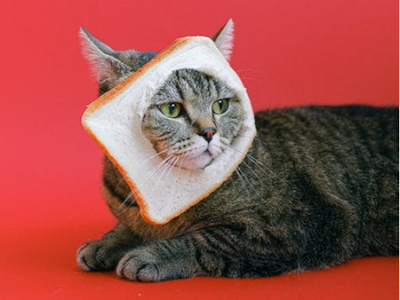
![Associated image for Best food for Ragdoll cats in the UK [Broken Down]](http://untamed.com/cdn/shop/articles/featured_best_food_for_ragdoll_cats_uk_400x300_crop_center.jpg?v=1646818249)
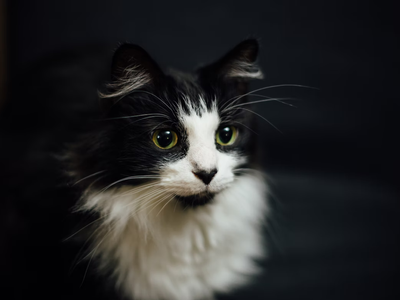
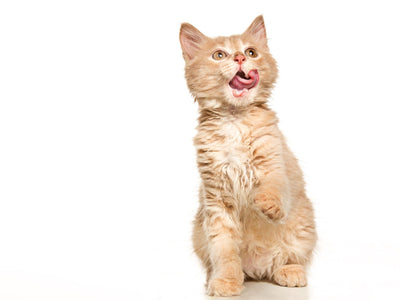
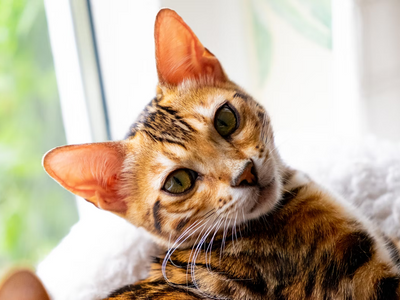
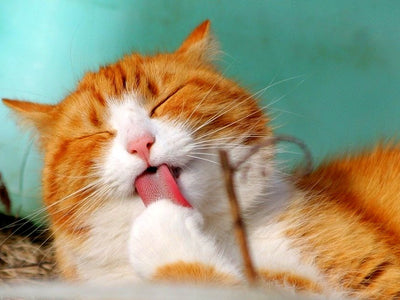
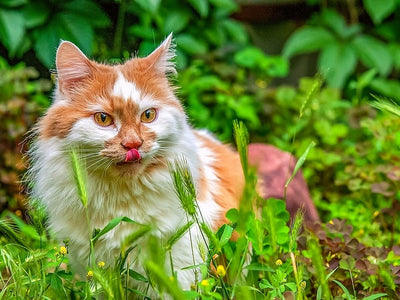
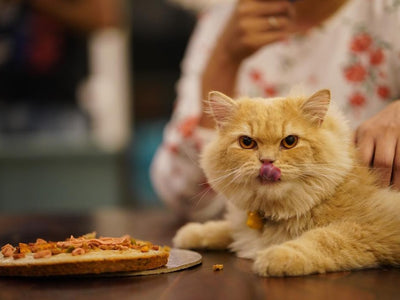
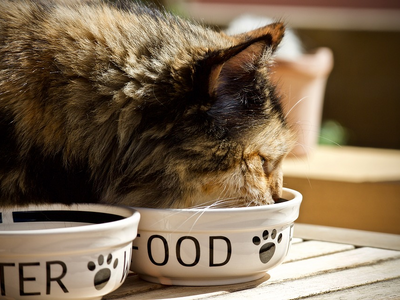
![Associated image for What human food can Sphynx cats eat? [Comprehensive list]](http://untamed.com/cdn/shop/articles/what_human_food_can_sphynx_cats_eat_Featured_400x300_crop_center.jpg?v=1648705074)
